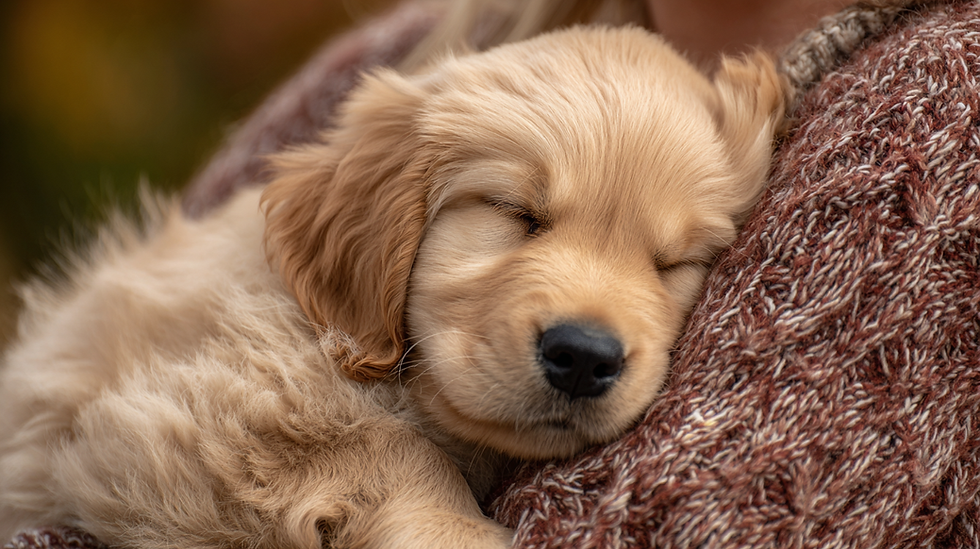Essential Puppy Gear Checklist: What's Actually Worth Buying
- nannykp76
- Oct 2
- 4 min read

Bringing home a new puppy comes with more than just excitement. It often comes with a shopping list. Pet stores and online retailers are filled with colorful products, clever gadgets, and every "must-have" accessory imaginable. It can be tempting to fill your cart with everything you see, but the truth is, not all puppy gear is truly necessary.
In the early weeks, the goal is to focus on the essentials. The items that genuinely support safety, structure, bonding, and comfort. By starting with the right tools, you can make daily routines smoother, reduce overwhelm, and create an environment where your puppy feels secure and confident.
Why Less Can Be More in the Early Weeks
Puppyhood is a stage of discovery, not excess. The early weeks at home are about building trust and introducing your puppy to new experiences gradually. Too many new items at once can be overwhelming, just like too many new environments or too many visitors.
Starting with a purposeful selection of gear allows you to:
Avoid clutter and confusion.
Save money by skipping unnecessary purchases.
Focus on creating positive associations with each new item.
When each product you bring home serves a clear purpose, it becomes a tool for connection rather than just something that takes up space.
Foundational Items for a Smooth Start
These are the core essentials that help establish healthy habits, provide safety, and support a smooth transition into your home.
Crate or Playpen
A properly sized crate gives your puppy a secure space for sleeping and resting. It supports potty training, encourages self-soothing, and creates boundaries that make life calmer for everyone. Many families pair the crate with a sturdy playpen for times when the puppy can be near but still safely contained.
Food and Water Bowls
Choose stainless steel or ceramic bowls for durability and easy cleaning. They resist bacteria better than plastic and last longer. For enthusiastic eaters, a slow feeder can help prevent gulping, while very small or flat-faced breeds may do better with shallow dishes. Always keep feeding stations in a consistent location to build routine.
Leash, Collar, and Harness
Even before your puppy begins going on walks, introducing a lightweight leash, a basic collar, and a well-fitting harness is helpful. You can practice short, calm sessions indoors to get your puppy comfortable with wearing gear and following gentle handling. Many caregivers find that a front-clip harness works well for early training, helping guide the puppy without encouraging pulling.
Potty Supplies
Being prepared makes potty training smoother. Depending on your setup, you may use outdoor trips, grass patches, or potty pads but no matter the method, have supplies ready at every exit.
You’ll need:
Quality waste bags
An enzyme cleaner for accidents
A plan for consistent potty trips
Going outside right after meals, play sessions, and naps is key for success.
Grooming Tools
Grooming from an early age teaches your puppy to accept handling and care without fear. A good starter kit includes:
A soft brush suitable for puppy coats
A gentle dog-safe shampoo
Grooming wipes for quick cleanups
Puppy nail clippers or a nail file
A detangling comb for longer coats
Keep sessions short and positive because even a minute of brushing paired with praise builds comfort over time.
ID Tag and Microchip Registration
Every puppy should wear an ID tag with a current phone number, even if they are microchipped. Accidents happen, and quick identification can be lifesaving. If your puppy is microchipped, register the chip and keep your contact details up to date.
Comfort and Connection Tools
These items help your puppy feel relaxed and secure as they adjust to their new environment.
Soft Bedding
Washable crate mats, fleece blankets, or thin beds work well for young puppies. Keep bedding simple at first, especially for chewers, and layer for comfort. Over time, as your puppy's chewing habits become clear, you can invest in more plush options.
Calming Toys or Chews
Heartbeat toys, frozen teething chews, or soft plush items can make downtime more comforting. Always supervise anything with stuffing, squeakers, or seams until you know your puppy's chewing style.
Training Treats and Treat Pouch
Tiny, soft treats let you reward good behavior immediately, which speeds up learning. Keep them accessible in a pouch, small container, or jar so you can reinforce behaviors as they happen.
Baby Gates or Room Dividers
Limiting access to certain rooms not only protects your home but also helps with potty training and safety. Gates keep your puppy within sight and close to their potty area while preventing accidents in harder-to-clean spaces.
Items That Can Wait
Not everything has to be purchased before your puppy arrives. Some products are better introduced later or may not be needed at all.
Items you can delay include:
Elevated bowls, unless specifically recommended by your veterinarian.
Large dog beds or specialty carriers are better suited for older puppies or adult dogs.
Clothing and accessories are only needed for certain breeds or extreme weather.
By waiting, you can make more informed choices based on your puppy's growth, temperament, and needs.
Buying With Purpose
Every puppy is unique. Breed, lifestyle, and personality will all shape what is most useful. Instead of aiming for a "complete" gear list, aim for a thoughtful one. Ask yourself:
Does this item help keep my puppy safe?
Will it strengthen our connection?
Does it make daily routines smoother or more comfortable?

Comments